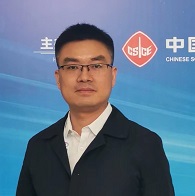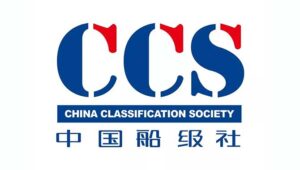2 – 5 December 2025
Shanghai New International Expo Centre (SNIEC), China
中国上海浦东新区龙阳路2345号, 上海新国际博览中心
2 – 5 December 2025
Shanghai New International Expo Centre (SNIEC), China
中国上海浦东新区龙阳路2345号, 上海新国际博览中心

Mr GAN Shaowei,
Acting Director,
Wuhan Rules & Research Institute,
China Classification Society

The 80th meeting of the IMO-Marine Environment Protection Committee, was held in London on July 3-7, 2023, and the most important outcome of the meeting was the adoption of a greenhouse gas reduction strategy. In order to help interested parties, understand the profound impact on the maritime industry in a timely and accurate manner, the organisers of Marintec China, namely Informa Markets, and Shanghai Society of Naval Architecture and Marine Engineering, jointly invite relevant authorities to analyze, interpret and propose countermeasures.
Moderator: Dr WANG Jinbao,
Former Chairman of ITTC Specialist Committees on Ship’s Operational Performance / Deputy Director of International Exchange Committee of Shanghai Society Naval Architects and Marine Engineers/Senior expert of Marine Design and Research Institute of China
Guest Speaker: Mr GAN Shaowei,
Acting Director, Wuhan Rules & Research Institute, CCS
Wang:
The Marintec China 2023 is scheduled to be held in Shanghai this December. As an important part of the event, the Senior Maritime Forum will focus on hot topics in the maritime industry, including the outcomes of the recently concluded MEPC 80 Meeting, which will have a profound impact on the maritime industry. In order to timely and accurately understand the contents of the meeting, the organizers of Marintec China, Shanghai Society of Naval Architects and Marine Engineers (SNAME), and Inform Markets, will jointly invite authoritative experts to analyze and propose countermeasures.
Gan:
Greetings everyone, I am Gan Shaowei, the Acting Director of Wuhan Rules & Research Institute of China Classification Society, and a senior researcher. It’s a great pleasure to meet you here.
The conference adopted the 2023 IMO STRATEGY ON REDUCTION OF GHG EMISSIONS FROM SHIPS, which further tightened policies on international shipping’s greenhouse gas emissions. The strategy includes indicative checkpoints for 2030 and 2040.
As evident from the revised targets, the emission reduction objectives have become more stringent, and the pace of reduction has accelerated compared to the initial 2008 strategy. Notably, the focus is on the total emissions from the full life-cycle of the fuels used by ships (Well-to-Wake), not just onboard emissions.
To carry out targeted technological research, I would suggest the following three aspects:
Wang:
The third question pertains to the new emission reduction strategy, which proposes a goal of at least 5% and strives for 10% in terms of the share of alternative energy sources and technologies. How can this goal be achieved? What are the challenges in terms of technology?
Gan:
Currently, the application of zero-emission fuels and technologies in the maritime industry is still at its early stages, with limited examples of real ship applications. With only seven years left until 2030, achieving this goal is indeed pressing. To drive the industry towards this target, I believe efforts should be made in two aspects: the supply side and the application side.
From the supply side, the maritime industry consumes nearly 400 million tons of traditional fossil fuels annually. Meeting the 5% to 10% share of zero or near-zero emission green fuels by 2030 means that 20 to 40 million tons of traditional fuels need to be replaced by green fuels. Therefore, it is crucial to advance the research, industrialization, and scaling-up of green fuel preparation technologies to provide the maritime industry with a sufficient, reliable, and affordable supply of green fuels.
From the application side, Therefore, I believe for the short term the main focus for achieving the targets for fuel application share by 2030 should be on existing ships, with new builds playing a complementary role. For existing ships, compatible fuels with their current propulsion systems can be adopted, such as drop-in bio-fuels that can be used without significant modifications. Alternatively, existing ships can be retrofitted to become dual-fuel-powered to utilize green fuels like methanol or bio-liquefied natural gas. For new builds, it is advisable to accelerate the development of methanol and ammonia-fuelled ship designs and equip them with corresponding technologies to provide technical support for the scaled-up application of these green fuels.
Wang:
Speaking of alternative or new energy sources, you have extensive expertise in the new energy transformation of ships. From your study, what role can sustainable energy play in responding to the new emission reduction strategy?
Gan:
The maritime industry has conducted extensive research and practical applications related to energy efficiency technologies, sustainable energy, carbon capture, and corresponding market mechanisms. While energy efficiency measures are effective, their potential is limited, and relying solely on these measures cannot achieve the ambitious goal of zero emissions in the shipping industry. Carbon capture technology is developing rapidly, but its large-scale application in the maritime sector still requires further progress, particularly concerning storage, certification, and regulatory aspects.
In this situation, sustainable energy or alternative fuels play a fundamental role in achieving emission reduction from the source to the ship’s end. They are considered the essential and decisive path to realizing emission reduction in the maritime industry.
Regarding sustainable energy, we have some perspectives to consider for achieving the 2030 emission reduction targets.
The first measure is to promote the use of relatively mature alternative fuels, such as LNG and methanol is recommended. Additionally, fuels like drop-in biofuels that can be used directly without significant modifications should also be encouraged.
For the mid-to-long-term targets, when emission requirements demand a reduction of 70% to 80% in shipping capacity, green fuels like bio- or e- methanol, ammonia, and drop-in biofuels with near-zero emissions are expected to dominate the market. Which means, by 2040 and beyond, clean electricity and synthetic fuels derived from clean sources of carbon, are likely to play a significant role in shipping.
Wang:
The last question is “As the shipping industry is about to implement mid-term emission reduction measures, including technological measures, what recommendations do you have for the maritime sector?”
Gan:
IMO discussed a series of mid-term emission reduction measures, including both technical and economic elements. These measures, collectively known as a package of solutions,
Despite the measures not being entirely finalized, we have several recommendations. First, it is essential to intensify research and development efforts in alternative energy and emission reduction technologies.
The second suggestion is to establish the capacity for sustainable supply of green fuels. The availability of green and sustainable fuels is crucial for the shipping industry to achieve medium to long-term emission reduction goals.
The current global green fuel production and its supply capacity are still at a scale of millions of tons, far from meeting the demand. Compared to the industry, the planned production of green fuels from biomass is even more meager. Therefore, it is recommended that the industry pay high attention to the availability and sustainability of marine fuels and strengthen investment in this area.
The third suggestion is to calculate and analyze the impact of economic measures in advance.
The fourth suggestion is to strengthen the coordinated and integrated development of the industrial chain.
So we suggest strengthening cooperation in various fields such as industry, transportation, energy, finance, and environmental protection. In particular, it involves the production and supply of Alternative fuel in the upstream, the manufacturing of ships and equipment in the midstream, and the operation of downstream shipping enterprises. All industry chains need to collaborate closely.
5 – 8 December 2023, at Shanghai New International Expo Centre, we look forward to seeing you at Marintec China